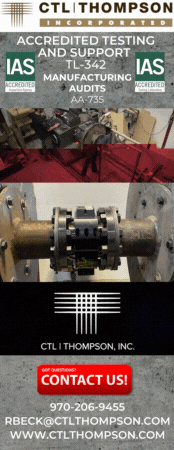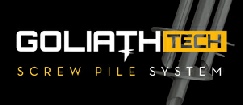

Copyright © 2011-25 Helical Pile World, LLC. All Rights Reserved.
Home | Engineers | Manufacturers | Installation Contractors | News | Technical Advisors | Contact Us







Helical piles, also known as helical piers or screw piles, are a revolutionary foundation system in construction, offering flexibility across various ground conditions.
Their adaptability across multiple terrains makes them invaluable, but understanding how they work in different soils can ensure a project's success.
Below, we delve into the functionality of helical piles in rocky, wet/soft, and hard/firm soils.
1. Rocky Soil
Rocky soil presents unique challenges, but helical piers can adeptly navigate these issues:
Using a Small Single Helix:
A small single helix can effectively maneuver through rocky terrains, often pushing smaller rocks out of its path during installation.
Dealing with Immovable Rocks:
- Option #1: Experienced installers possess techniques to "steer" the pile around stubborn rocks.
- Option #2: When rocks obstruct the pile's path from below, you can use the excavator bucket to dig and remove the rock.
- Option #3: If the rock proves too vast for removal, the ideal solution could be using two smaller piles on either side of the impediment.
2. Wet/Soft Soil
For the malleable nature of wet or soft soils, consider these strategies:
- Option #1: Employing a large single helix often provides the necessary grip and foundation.
- Option #2: Using multiple helices can distribute the weight and ensure stability.
- Option #3: If the top layers are too unstable, helix extensions can be used. This allows the helix to reach firmer soils deeper down. It's commonly believed that soil quality improves with depth.
3. Hard/Firm Soil
- Hard soils require a different approach to ensure the screw piles anchor effectively:
- Using a Smaller Helix: A smaller helix is usually sufficient for firmer soils.
- Applying Pressure: During installation, it's crucial to apply crowd/pressure on the pile. This helps the helix embed itself into the ground effectively.
- Pre-drilling: For exceptionally hard soil layers, predrilling can be a good strategy. It creates a path for the helix to reach and settle in the desired soil layer.
In conclusion, the adaptability of helical piles across diverse soil conditions underlines their versatility in construction projects. Choosing the right strategy based on soil type ensures a stable and robust foundation.
About GoliathTech
GoliathTech stands tall as a beacon of leadership in the helical pier (pile) industry, consistently setting benchmarks in quality and innovation. With our team of certified experts at GoliathTech, we are ever-prepared to offer guidance and solutions tailored to your construction needs.
For a comprehensive overview of what we do, we invite you to explore our website at goliathtechpiles.com.
For those envisioning a future in this dynamic industry, GoliathTech extends lucrative franchise opportunities, all of which can be explored in detail at goliathtechfranchise.com. Seize the moment, and align with us to reshape the construction landscape.
Take the first step toward a brighter construction future with GoliathTech today!
How Helical Piers (Piles) Work in Different Soil Conditions

For additional information:
GoliathTech, Inc.
477, Boulevard Poirier
Magog, Québec (Canada) J1X 7L1
Toll Free: 1.855.743.4777
info@goliathtechpiles.com
